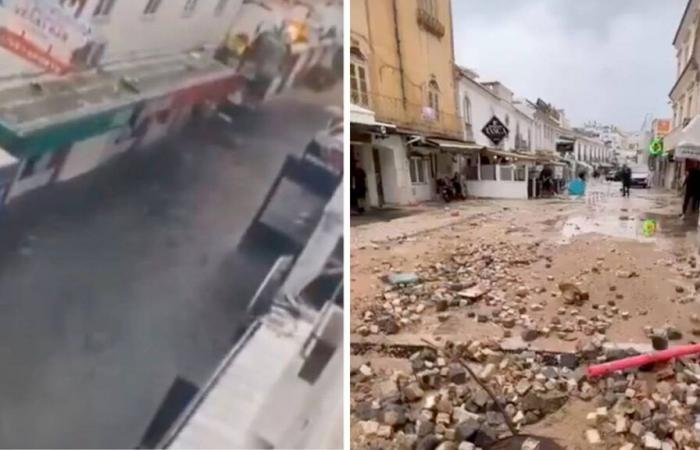15 November 2024, 14:08
Torrents of water have hit the streets of Portugal’s Algarve region.
Picture:
X
Torrents of water have hit the streets of Portugal’s Algarve region as Europe continues to be devastated by flash flooding.
Videos have been shared on social media showing the terrifying scenes in the popular British tourist destination with water seen gushing through downtown Albufeira.
Homes and businesses are seen to be submerged while other clips have shown mud and debris strewn across the city’s streets after the flooding had subsided.

Videos have been shared on social media showing water gushing through downtown Albufeira.
Picture:
X

Videos have been shared on social media showing water gushing through downtown Albufeira.
Picture:
X
There was also flooding in Moncarapacho where a car was reportedly filmed being dragged by a strong current down a flooded street.
According to local reports, the floods were caused by just five minutes of heavy rain on Thursday morning.
The Algarve and four other districts in Portugal have since been put under a weather warning as the country braces for more torrential rain.

clips have shown mud and debris strewn across Albufeira’s streets after the flooding had subsided.
Picture:
X

The Algarve region is a popular tourist destination for British holidaymakers.
Picture:
Alamy
It comes after flash floods in the Valencia region of Spain killed more than 220 people and destroyed thousands of homes just over two weeks ago.
Much of the country is still on alert as the extreme weather shows little sign of letting up, with thousands evacuated from their homes in the Costa del Sol region on Wednesday with the highest alert for strong rain expected to last until Friday.
Read more: Spain takes drastic measures as more flooding looms, as some locals even tie their cars up and wrap them in film
Read more: Flood-hit areas of Spain brace for torrential rain forecast as orange alert issued
The Malaga area, including the tourist resorts of Marbella, Velez and Estepona, was expected to take the brunt of the extreme weather phenomenon known as a “Dana”.
Meanwhile, coastal areas of Valencia were put on the highest alert on Wednesday night, with forecasters warning that up to 180 millimetres (7 inches) of rain could fall within five hours.

Flash floods in the Valencia region of Spain have killed more than 220 people.
Picture:
Alamy
The most up to date reports indicate that 223 people lost their lives, with at least 31 still missing, making it Spain’s deadliest weather disaster in decades.
The emergency response included the deployment of over 2,000 personnel from Spain’s military emergency unit, who worked alongside local responders and volunteers to conduct rescue and recovery operations.
An additional number of more than 30,000 volunteers have been mobilised, from all over the country, to support the ongoing cleanup efforts.







